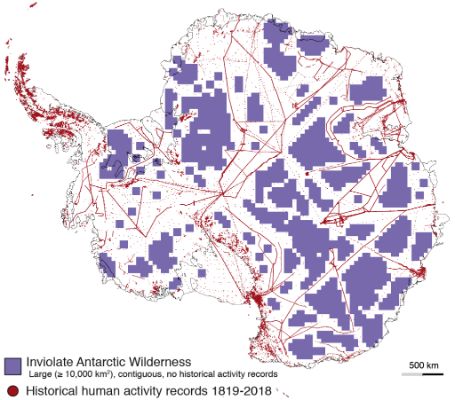Antarctica More Widely Impacted By Human Activity Than Previously Thought

Antarctica is usually viewed as a large, pristine wilderness area, untouched by humans. Yet since its formal discovery 200 years ago, the continent has seen accelerating and potentially impactful human activity.
How widespread this activity is across the continent has never been quantified. We know Antarctica has no cities, agriculture or industry. But we have never had a good idea of where humans have been, how much of the continent remains untouched or largely unimpacted, and to what extent these largely unimpacted areas serve to protect biodiversity.
A team of researchers led by Monash University, including Dr Fraser Morgan of Manaaki Whenua - Landcare Research and Te Pūnaha Matatini at the University of Auckland, has changed all of that. Reporting today in the journal Nature, using a dataset of 2.7 million human activity records, they show just how extensive human use of Antarctica has been over the past 200 years.
Apart from some large areas, mostly in the central parts of the continent, humans have set foot almost everywhere.
Although many of these visited areas have only been negligibly affected by people, biodiversity is not as well represented within them as it should be.
Only 16% of the continent’s Important Bird Areas, areas identified internationally as critical for bird conservation, are located within negligibly impacted areas. And little of the total negligibly impacted area is represented in Antarctica’s Specially Protected Area network.
Areas of high human impact, for example some areas where people build research stations or visit for tourism, often overlap with areas important for biodiversity.
Lead author Rachel Leihy, a PhD student in the Monash School of Biological Sciences, points out that ‘While the situation does not look promising initially, the outcomes show that much opportunity exists to take swift action to declare new protected areas for the conservation of both wilderness and biodiversity.’
Dr Morgan notes that ‘with the rise in the ability to access and quantify historical information, these types of large-scale informatic approaches are enabling new insights into Antarctica for both science and environmental management.’
The transdisciplinary team delivering this work includes researchers from Australia, the Netherlands, New Zealand, and South Africa.
A short video about the research is available here: https://youtu.be/vG0cbCT5W3U



 ChargeNet: EV infrastructure co-funding model welcomed
ChargeNet: EV infrastructure co-funding model welcomed NZ Trucking Association: TruckSafe New Zealand Launches | A Game-Changer For Heavy Vehicle Safety And Compliance
NZ Trucking Association: TruckSafe New Zealand Launches | A Game-Changer For Heavy Vehicle Safety And Compliance Gaurav Mittal, IMI: How Can We Balance AI’s Potential And Ethical Challenges?
Gaurav Mittal, IMI: How Can We Balance AI’s Potential And Ethical Challenges? Science Media Centre: Several US-based Environmental Science Databases To Be Taken Down – Expert Reaction
Science Media Centre: Several US-based Environmental Science Databases To Be Taken Down – Expert Reaction Consumer NZ: Despite Low Confidence In Government Efforts, People Want Urgent Action To Lower Grocery Bills
Consumer NZ: Despite Low Confidence In Government Efforts, People Want Urgent Action To Lower Grocery Bills NZ Banking Association: Banks Step Up Customer Scam Protections And Compensation
NZ Banking Association: Banks Step Up Customer Scam Protections And Compensation